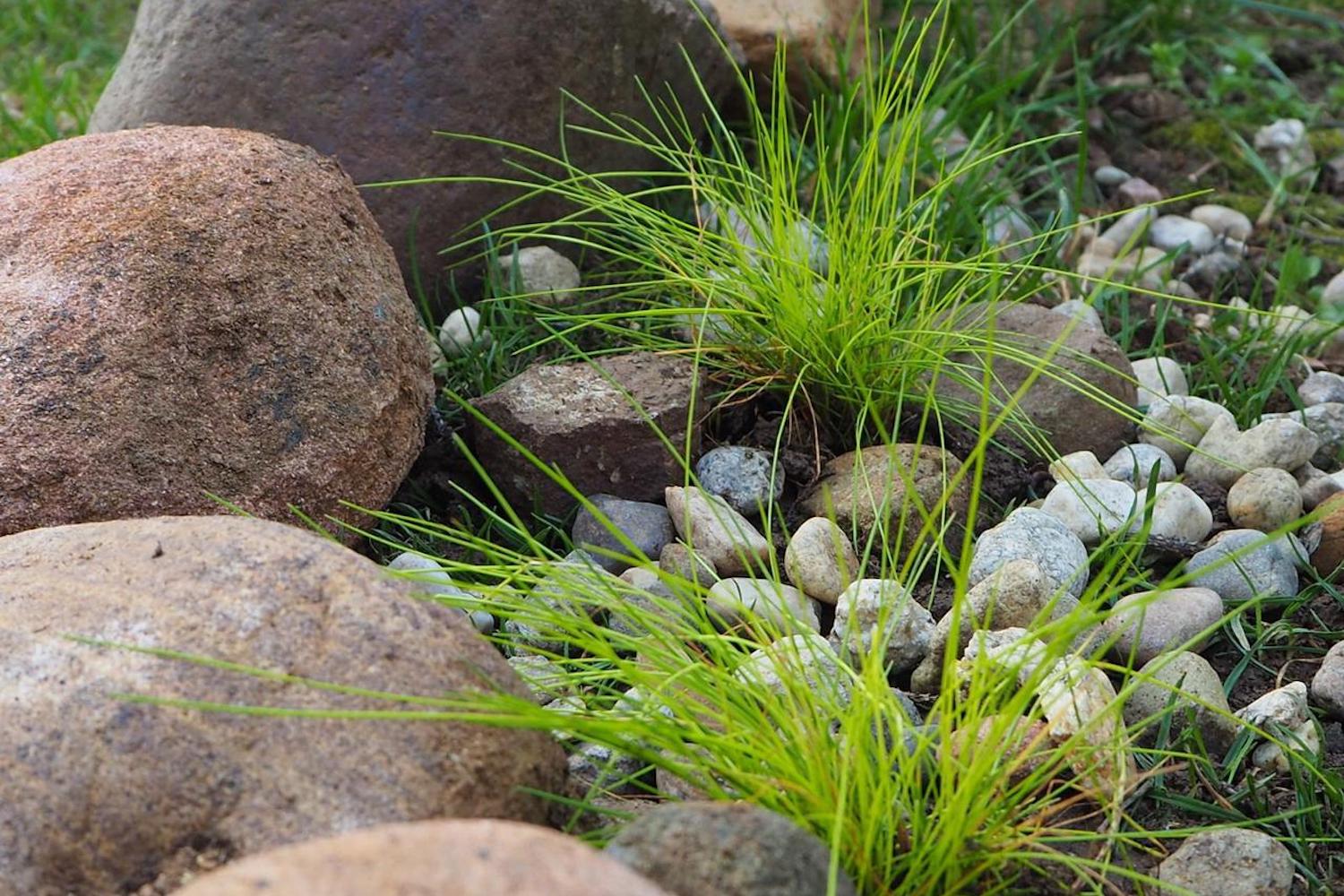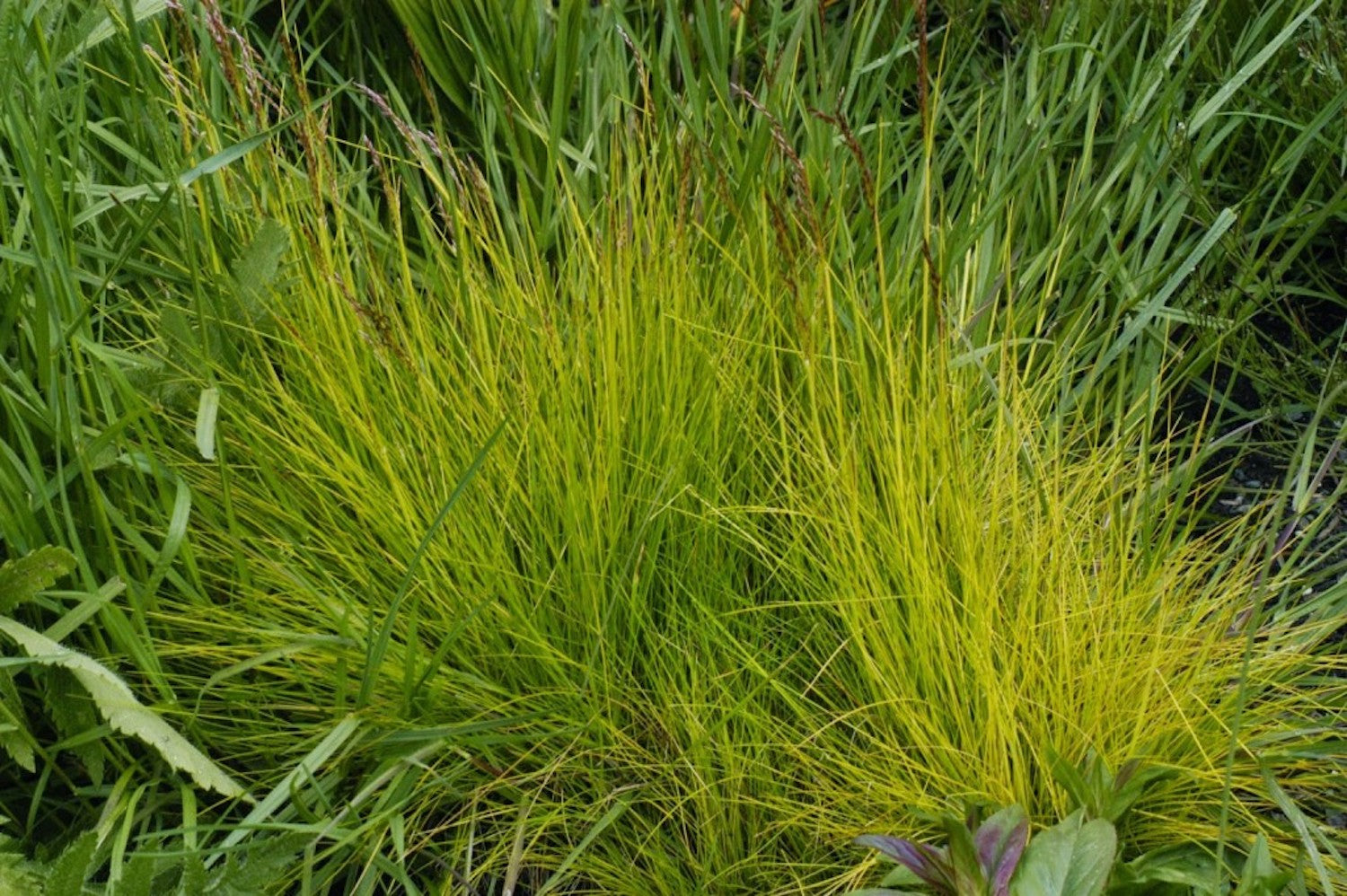Deschampsia flexuosa 'Tatra Gold'
Approx. 0.5 litre pot
About this cultivar:
Deschampsia flexuosa 'Tatra Gold' is a compact tussock-forming evergreen grass with slender, bright yellow leaves and airy, pale bronze flower panicles in early summer. This cultivar is more compact than the species and has golden-yellow colour leaves (whereas the species has green leaves).
The species, Deschampsia flexuosa, is native across a wide range of woods, slopes, fields, grasslands and open areas in North America, Europe and Asia. It is commonly called wavy or crinkled hair grass. The species name means zigzag or winding. In summer the panicles spread out wide and form delightful airy cloud of tiny, bronze flowers over the foliage that is attractive when backlit. After you see this you can see where the the common name comes from!
The flower panicles turn gold after bloom as the seed ripens, and may remain attractive through much of the winter. This versitile grass can be tried anywhere really, also good as a cut flower, even tho small! Has the Royal Horticultural Society Award of Garden Merit.
- Position: Full sun, partial shade
- Soil: Almost any soil, grows well in Ballyrobert
- Flowers: June, July, August
- Other features: Royal Horticultural Society Award of Garden Merit (RHS AGM), Grows well in Ballyrobert, Cut Flowers or Dried Flowers
- Hardiness: H6 - Hardy in all of UK and northern Europe (-20 to -15°C), Fully hardy - grows well in Ballyrobert!
- Habit: Bushy, clump forming
- Foliage: Evergreen
- Height: 30 - 45 cm (1 - 1.5 ft)
- Spread: 15 - 25 cm (0.5 - 1 ft)
- Time to full growth: 2 to 5 years
- Plant type: Herbaceous Perennial, Grass like
- Colour: Green, yellow
- Goes well with: Astrantia, Kniphofia, Achillea, Salvia, Iris, Papaver, Acanthus
About this genus:
Deschampsia is a genus of grasses in the true-grass family (Poaceae), commonly known as hair grass or tussock grass. There are 30 to 40 species, many of which are native to Britain and Ireland. The genus is named for French physician and naturalist Louis Auguste Deschamps, 1765-1842.
They have a reputation of being able to grow anywhere ; a Deschampsia species is one of only two flowering plants in Antarctica and some Deschampsia even grow in the boggy acidic formations of Portlethen Moss in Scotland. Unfortunately for nursery-men Deschampsia also have a reputation of seeding everywhere and becoming a garden pest; which is not true for many of the cultivars (thank you plant-breeders!). Some of the better cultivars look fantastic in our garden and it sometimes makes you wonder why so many 'prairie-style' gardens are using American natives when Deschampsia looks and performs better over here!
Where will they grow? Anywhere (even the Antarctic remember!) - but not full shade.
What they pair well with? Anything really. We love it with Astrantia, Kniphofia, Achillea, Salvia, Iris, Papaver, Acanthus and so on. Forms a great back drop/canvas as well as a foreground/veil.








